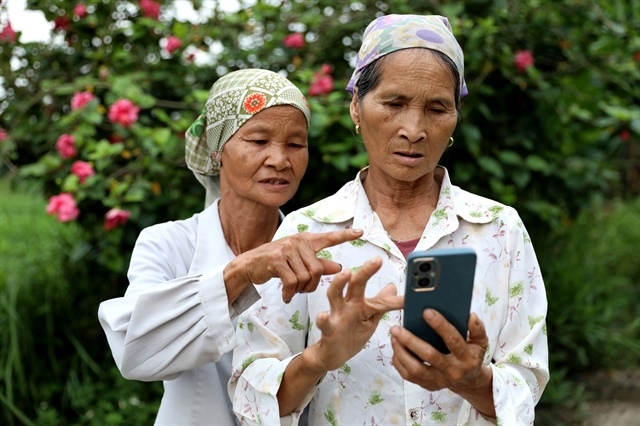Commitment to lower coal energy uncertain
Commitment to lower coal energy uncertain
The COP26 summit that ended early last month in Glasgow agreed on reducing the use of coal in coming years in a phased manner. This clearly seems to be the right thing to do with several countries finally finding a common voice in saving the planet.
Illustrative photo. |
However, all climate related issues are associated with economic development plans and progress, which then require compromises and trade-offs. Vietnam too will face challenges as it tries to meet its commitment to lower dependence on coal energy.
Countries not complying
At the COP26 summit, for the first time there was a common agreement to reduce fossil fuels as they are the main cause of global temperature warming. Demand for the elimination of use of coal has now grown worldwide. However, the highest populated countries such as India and China are in total disagreement with the other countries that have signed up for the reduction of coal energy. Both India and China are the two most populous countries in the world and have a very high demand for energy for production and daily livelihood. With both countries not complying to the final agreement on coal, there lies a stalemate in the efforts to save the planet.
Vietnam is also among those countries that has its economic growth linked heavily to coal energy. According to a report of the Ministry of Industry and Trade under the Power Plan VIII submitted to the Prime Minister, by the end of 2020 the total installed capacity of the national power source in coal power accounted for 30.8% of capacity and 50% of output; gas power accounted for 13.1% to 14.6%; wind power was at 26.4% and solar power at 4.1%. It is expected that by 2030 coal power capacity will fluctuate at between 28.4% to 31.4%; and gas power will increase sharply between 21.1% to 22.4%. In terms of policy, Vietnam will still find it difficult to give up coal power, hence it needs to try out other green power sources.
In the spirit of implementing its commitment at COP26, Vietnam will reduce coal power but cannot do so immediately. The main problem lies in the arrangement of capital. To increase the proportion of gas fired power to gradually replacing it with coal fired power, we must accept high import prices, which will then push up production costs and ultimately create a burden on electric bills. Energy is both an important input source for production and a common consumer item. An increase in electricity prices will create a chain reaction that will put pressure on inflation and the macro stability of the economy.
Policy dilemma
Maintaining coal power faces many challenges currently. In the world, only about 10% of financial institutions provide credit for coal power and this too is gradually shrinking. There are also very few units willing to provide capital for new coal power projects. To invest in a coal power project, credit institutions must consider a lot of things, such as risk management and the ability to offset the green financial criteria they must meet in the global assessment criteria. Therefore, interest rates will naturally be higher.
Referring to the issue of emissions due to fossil fuels in relation to economic growth, Japanese economist Yoichi Kaya has a summation formula of CO2=population x GDP per capita (energy/ GDP) x (CO2/energy). Therefore, if you want to reduce emissions for sustainable development, you must reduce at least one of the four factors of population, GDP per capita, energy, and emissions for that amount of energy.
Many people think that population and GDP should be considered, but population reduction is not feasible, so the pressure will be on GDP. For rich countries, the reduction in GDP is easier to accept than for developing and emerging countries, including Vietnam. GDP growth figures are very important in the development strategy of developing countries to catch up with other developed countries. This also explains why India and China oppose the phasing out or total reduction of coal energy.
This situation puts Vietnam in a policy dilemma. If coal power is removed, there is the possibility of not balancing enough resources to ensure energy security. However, if we still keep the coal power, the risk must be equal to the growth rate. Therefore, Vietnam is forced to make its own choice. In the spirit of commitment towards COP26 and building a roadmap for greening the energy structure, choosing to keep coal power is appropriate and understandable. Of course, there is a trade-off of a few percent of GDP, but there are ways to mitigate these effects.
In terms of institutions, this is a large field with benefits covering the whole of society. The State cannot do it alone but needs cooperation of private investors. For example, a wind power project usually takes three to five years from project development to operation, and wind measurement requires at least 12 months. The policy without long term stability will make it difficult for the research and exploitation process of these units. There have been cases where the project was subjected to complicated valuation procedures and overlapping regulations. After six months of generating electricity to the grid, investors still have not agreed on electricity prices with EVN. Therefore, it is necessary to review and clear bottlenecks in procedures and regulations to strengthen the willingness to invest by private companies.
With the current shift towards green finance, banks are competing to provide preferential credit for renewable energy and clean energy projects. However, the interest rate on these loans depends on the risk assessment in the country. If Vietnam can effectively control the risk of various policies, and actively provide legal support, external capital will be of great help. In fact, countries all have intertwined economic interests. Growth in developing countries is also partly responding to demand in developed countries. Vietnam can take advantage of its international prestige to conduct energy diplomacy, and mobilize and call for investment from major countries for its progressive energy projects, as we have done before. As the whole world saw, Vietnam did a great job with the vaccine diplomacy strategy.























